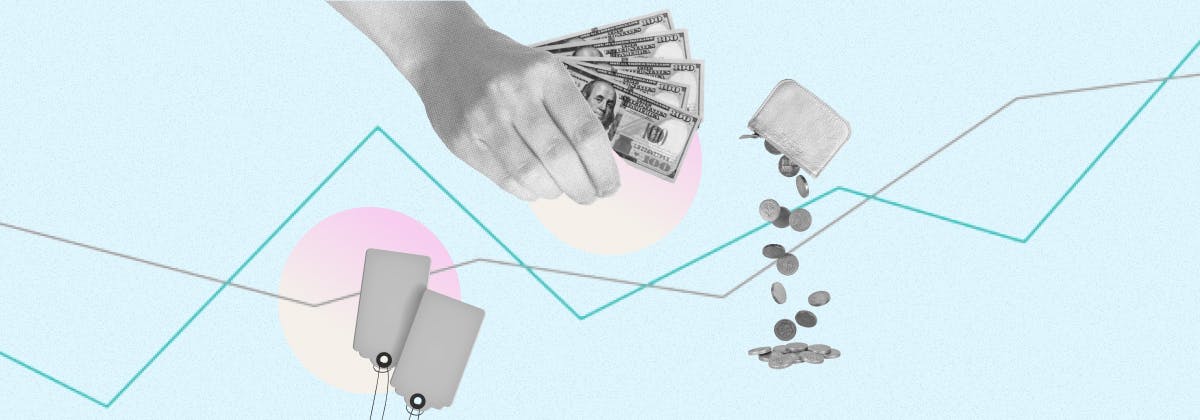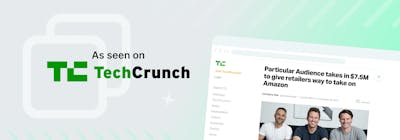With inflation at record highs, many are predicting that consumer spending habits will change (you can read more about that here in our deep dive into inflation).
As a retailer, it’s important to remember that there is a playbook of tactics that convert in periods of economic change. HBR first wrote about it in 2009.
We’ve highlighted four of these tactics below, including making use of Bundles, strengthening customer relationships, using data driven pricing intelligence and maintaining marketing.
1. Make use of Bundles
Shoppers are looking for convenience and value. In a downturn, that means they're looking for deals and discounts — and they don't want to spend too much time or effort finding them. That’s where Bundles come in.
Customers love Bundles because they're convenient and provide better value for money by offering two or more complementary products as a package. They're also great for retailers because they drive sales, increase basket size and lift average order value (AOV).
Bundles keep customers onsite by simplifying their buying journey. Finding everything in one place (your store) means customers leave with a positive brand experience, building brand equity and fostering brand loyalty.
In short, they’re the ultimate win-win for customers and retailers.
2. Strengthen customer relationships
It’s particularly important to nurture connections with customers in uncertain economic times. As the pandemic demonstrated, customer relationships are uniquely shaped by the decisions retailers make during periods of crisis. A forward thinking approach can actually lay the foundations for growth. By offering great value, empathetic service and considering the priorities of consumers, you can reassure price conscious shoppers and smooth the path to conversion.
A key way to do this is by optimizing your business to deliver the right customer experience at the right time, and personalization can help.
What does this actually mean? There's a difference between getting an email with your name on it, and being served products on a website that are unique to what you’re looking for.
Customers appreciate convenience, and meaningful personalization is the surest way to deliver it. This is clear from Amazon’s AI powered Recommendation engine, which is responsible for 35% of the company’s revenue.
As PA CEO and Founder James Taylor points out, “Customer service at its best is giving someone what they want, without them needing to ask for it.”
Ultimately, with consumers under pressure, personalized Recommendations are an innovative way to offer real value and strengthen customer relationships.
3. Use data driven pricing intelligence
Retailers are getting smarter with data, and they're seeing the benefits. We all know consumers compare prices (especially in tough economic times). In a downturned economy it's important that you price items at levels where they're likely to sell quickly while still turning a profit.
One way to do this is to take advantage of data-driven pricing intelligence (AI) to keep customers onsite and offer excellent value. Real-time pricing technology such as PA’s Price Beat can take the labor out of creating dynamic experiences for customers by dynamically matching or beating prices.
Price Beat means you don’t have to drop prices across your whole inventory, but can still ensure you offer customers the best deals possible when shopping with you. Tools like Price Beat help build trust and encourage customers to return to your website when they need other products or services.
4. And finally, don’t stop marketing
One thing we know for certain is that no two downturns are the same - which means retailers need to be agile with their marketing strategies.
Although it can be daunting to navigate the choppy waters of a recession, the Harvard Business Review has discovered that continuing or even expanding marketing during a slump can have extraordinarily favorable results, presenting an opportunity to outcompete rivals and increase market share.
According to Forbes, businesses that maintained their marketing and advertising at pre-crisis levels had an increased market share of 0.6%, while the companies that increased their advertising saw an increase of 4.3% market share.
The key ways to maximize your impact, especially on a reduced budget are:
1) Understand your core customers and their needs.
2) Reward customer loyalty.
3) Understand your core brand proposition, don’t panic and alter your fundamental positioning.
In short
Retailers can take a number of steps to prepare for economic uncertainty, but it’s also worth thinking about how you can use this time as an opportunity to grow market share.
A forward thinking digital strategy, investment in cutting edge AI tech and strengthening customer relationships will help you prepare not only for the downturn, but also the recovery that will eventually follow. Customers will have more positive affinity with your brand and purchase more from you in the future.



